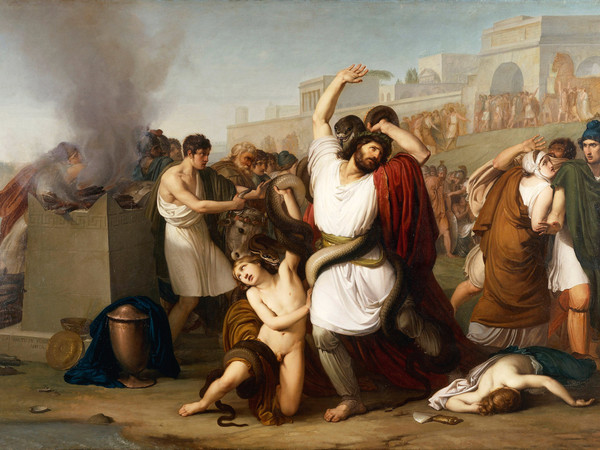Hayez. The romantic painter’s workshop

From 17 Ottobre 2023 to 01 Aprile 2024
Turin
Place: GAM – Galleria Civica d'Arte Moderna e Contemporanea
Address: Via Magenta 31
Times: Tuesday to Sunday: 10:00 a.m. - 6:00 p.m. Closed on Mondays The ticket service ends one hour before closing time
Responsibles: Fernando Mazzocca ed Elena Lissoni, In collaborazione con l'Accademia di Belle Arti di Brera
Organizers:
- Fondazione Torino Musei
- GAM Torino
- 24 ORE Cultura – Gruppo 24 ORE
Ticket price: Full € 13.00 | Discounted € 11.00 Exhibition+museum Full € 17.00 | Discounted € 15.00
Telefono per informazioni: +39 011 0881178
E-Mail info: gruppiescuole@tosc.it
Official site: http://www.gamtorino.it
Open to the public from 17 October 2023 to 1 April 2024, the exhibition “Hayez. L’officina del pittore romantico” [Hayez. The Romantic painter’s workshop] is organised and promoted by the Turin Museums Foundation, GAM Turin and 24 ORE Cultura – 24 ORE Group, curated by Fernando Mazzocca and Elena Lissoni, in collaboration with the Brera Academy of Fine Arts, from which an important collection of approximately fifty drawings and some of the most important paintings come, many of which were found in the workshop of the painter, who was professor of painting at the Academy for forty years.
In addition to previously unpublished or little-seen works, some of the most popular masterpieces can be seen, such as The Meditationfrom the Musei Civici in Verona - Achille Forti Modern Art Gallery and the Secret Accusation from the Castello Visconteo Civic Museums in Pavia, which is accompanied by The Council of Revenge, a prestigious loan from Liechtenstein. The Princely Collections, Vaduz-Vienna.
Through ten sections in chronological succession, the exhibition starts from his formative years in Venice and Rome, where Hayez enjoyed the protection and friendship of Canova, up to his first achievement in Milan and the last works in his mature years. A special focus section is dedicated to the drawings for the Crusaders' Silk, his most ambitious and challenging work, which the painter planned as his masterpiece, executed between 1833 and 1850 and intended for the Royal Palace in Turin, where it can still be admired. The exhibition evokes the intense biography and creative journey of the artist, an undisputed protagonist of Romanticism.
A “civil painter”, an interpreter of the fates of Italy as a nation, capable of extending the scope of his painting from history to current political events, he was also one of the greatest portrait painters of all time, who was able to interpret the spirit of his era through his work.
He was the protector of beauty, love and the values of the Risorgimento. In his long life, he was the protagonist of epoch-making changes, witnessing the transition from Neoclassicism to Romanticism. He was praised by Giuseppe Mazzini as the nation's great virtuoso, and shared the same ideals with Manzoni and Verdi, establishing a unique relationship with them, based on friendship and cultural understanding. The Italy of the Risorgimento was recognised in his style, which still manages to communicate universal sentiments and values, including through a civil dimension that actualises history.
This exhibition is innovative in bringing the paintings and drawings together for the first time, allowing us to reconstruct and understand the artist's creative process, and to introduce us into his workshop. In the work of Hayez, who considered himself to be the last representative of the great tradition of Venetian painting and who had been trained under Titian and the Venetian painters of the 15th and 16th century, at first glance drawing may seem secondary to colour. His contemporaries were impressed by his particular way of working that was based on the instinct of the time, with constant changes, also and especially during the process, which in many cases can even be recognised with the naked eye. The excellence and uniqueness of this technique are the charm and strength of a painting admired by the public and critics alike.
But we also know of hundreds of drawings by Hayez - most of which are preserved at the Brera Academy of Fine Arts - most often sketched in a quick and direct movement, as if they were visual notes to be used later when creating compositions, and only on very rare occasions reproduced in detail in large dimensions for subsequent translation onto canvas. In addition to the "sketches, quick thoughts, studies" mentioned above, which constitute an exceptional testimony of the painter's method of working, the artist left a very refined production of d'après: drawings and watercolours that faithfully reproduce some of his most famous works - probably intended as gifts for the most affectionate collectors - and which constituted a powerful instrument to disseminate his inventions.
“Francesco Hayez, born in Venice in 1791 and as a child witness to the fall of the ancient Republic, spent most of his life and achieved his success in Milan, where he passed away in 1882, bursting with age and glory like a new Titian, the painter to whom he liked to compare himself. In his very long life, almost a century, he was a leading player in epochal changes, witnessing the transition from Neoclassicism to Romanticism, of which he was one of the creators, to the new realist movements that emerged after the Unification of Italy. He is to be considered, together with Manzoni and Verdi, among the Fathers of the Country, not only because of his art, but also because of his political ideas. His training in Rome under Canova, who supported him with the conviction that he would become the artist capable of restoring Italian painting to its lost greatness, just as he had done in sculpture, was fundamental. This was recognised by his greatest supporters, such as Stendhal who considered him ‘the greatest living painter’ and Mazzini who consecrated him as the interpreter of national aspirations. He lived an exceptional life both from a personal point of view, emerging from humble beginnings and abandonment by his family, and had an outstanding career during which he engaged in dialogue with the great artists of his time, scholars, writers and musicians. His many loves and a great vital impulse are documented in his painting, which expressed a series of universal values, celebrating female beauty and the power of love, as in the series dedicated to Romeo and Juliet”, comments curator Fernando Mazzocca.
The exhibition is accompanied by the catalogue “Hayez. L’officina del pittore romantico” published by 24 ORE Cultura, available at the exhibition bookshop, in bookstores and online.
SCARICA IL COMUNICATO IN PDF

-
 Dal 27 marzo 2025 al 27 luglio 2025
Milano | Pirelli HangarBicocca
Dal 27 marzo 2025 al 27 luglio 2025
Milano | Pirelli HangarBicocca
-
 Dal 27 marzo 2025 al 30 giugno 2025
Bologna | Museo Civico Archeologico
Dal 27 marzo 2025 al 30 giugno 2025
Bologna | Museo Civico Archeologico
-
 Dal 27 marzo 2025 al 20 luglio 2025
Firenze | Villa Bardini
Dal 27 marzo 2025 al 20 luglio 2025
Firenze | Villa Bardini
-
 Dal 25 marzo 2025 al 24 agosto 2025
Brescia | Museo di Santa Giulia
Dal 25 marzo 2025 al 24 agosto 2025
Brescia | Museo di Santa Giulia
-
 Dal 22 marzo 2025 al 20 luglio 2025
Ferrara | Palazzo dei Diamanti
Dal 22 marzo 2025 al 20 luglio 2025
Ferrara | Palazzo dei Diamanti
-
 Dal 22 marzo 2025 al 08 giugno 2025
Venezia | Ca’ Pesaro – Galleria Internazionale d’Arte Moderna
Dal 22 marzo 2025 al 08 giugno 2025
Venezia | Ca’ Pesaro – Galleria Internazionale d’Arte Moderna


